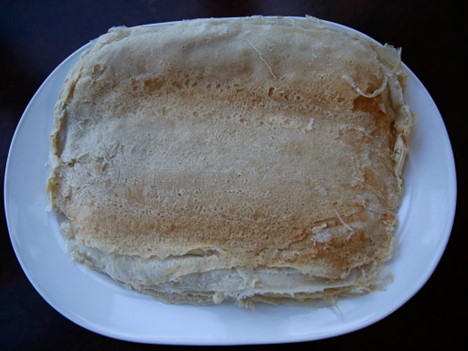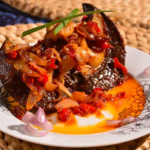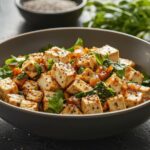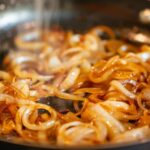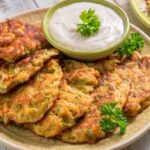In the heart of South Sudan, a land known for its rich cultural heritage and diverse cuisine, there is a culinary gem that has been delighting locals for generations: Kisra. This traditional fermented sorghum flatbread holds a special place in South Sudanese cuisine, with its unique flavors and textures that are a testament to the country’s culinary traditions.
Kisra is a staple food in South Sudan, often eaten alongside soups, stews, or various meat dishes. The flatbread is made from sorghum flour, a gluten-free grain that is widely cultivated in the region. The preparation of Kisra begins with fermenting the sorghum flour batter, allowing it to develop a tangy and slightly sour taste. This fermentation process not only enhances the flavors but also improves the bread’s digestibility and nutritional value.
The batter for Kisra is made by mixing sorghum flour with water and leaving it to ferment for a few days. During this time, natural bacteria and yeast present in the environment interact with the flour, resulting in a bubbly and slightly acidic mixture. Once the batter is fermented, it is thinned with water to achieve a pourable consistency.
To cook Kisra, a large, flat griddle or pan is heated, and a ladleful of the fermented batter is poured onto the hot surface. The batter spreads into a thin, circular shape, much like a crepe or pancake. As the flatbread cooks, small holes appear on the surface, giving it a unique texture. The bread is cooked on one side until it develops a golden-brown color and is then flipped to cook the other side briefly.
The taste of Kisra is truly something special. The fermentation process gives it a distinctive tanginess that is both refreshing and appetizing. The flavors are complex, with hints of acidity, nuttiness, and a subtle sweetness from the sorghum grain. The texture of the flatbread is soft and slightly chewy, making it a perfect accompaniment to soak up savory stews or soups.
Kisra is not just a delicious bread; it also holds cultural significance in South Sudanese society. It is often shared among family and friends during meals and celebrations, symbolizing unity and togetherness. The process of making Kisra is often a communal activity, with women gathering to prepare the batter, sharing stories, and passing down the traditional techniques from one generation to the next.
Moreover, Kisra is a testament to the resourcefulness of the South Sudanese people, who have relied on sorghum as a staple crop for centuries. Sorghum is well-suited to the region’s climate and grows abundantly, making it a vital food source. Kisra showcases the versatility of this grain and the ingenuity of using fermentation to transform it into a delectable and nutritious bread.
For those fortunate enough to savor Kisra, it offers a truly authentic taste of South Sudanese cuisine. The flavors transport you to the vibrant markets and bustling streets of the country, where the aroma of freshly cooked flatbread fills the air. Whether you enjoy it plain, as a vehicle for flavorful dips and spreads, or alongside hearty stews, Kisra is a culinary experience that should not be missed.
If you find yourself in South Sudan or come across a South Sudanese restaurant, be sure to indulge in the flavors of Kisra. This humble fermented sorghum flatbread encapsulates the essence of South Sudanese cuisine—rich, diverse, and deeply rooted in tradition. Prepare to embark on a gastronomic journey that will leave you craving for more of this remarkable culinary delight.
